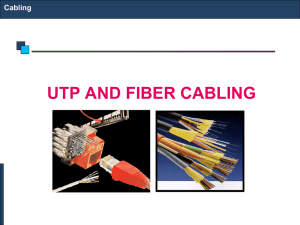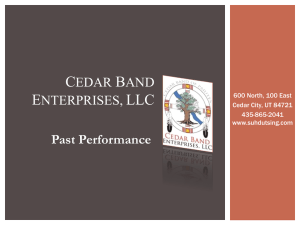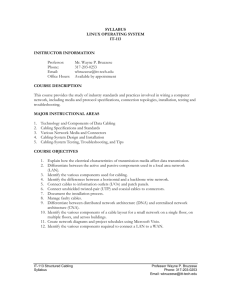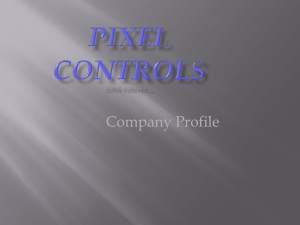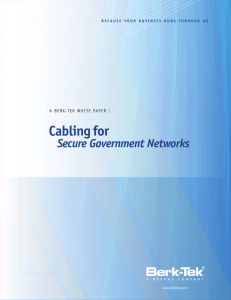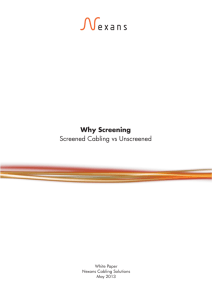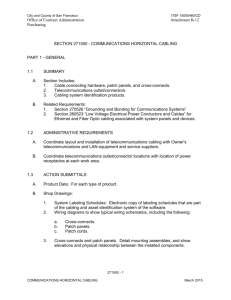Structured Cabling - Internet Solutions
advertisement
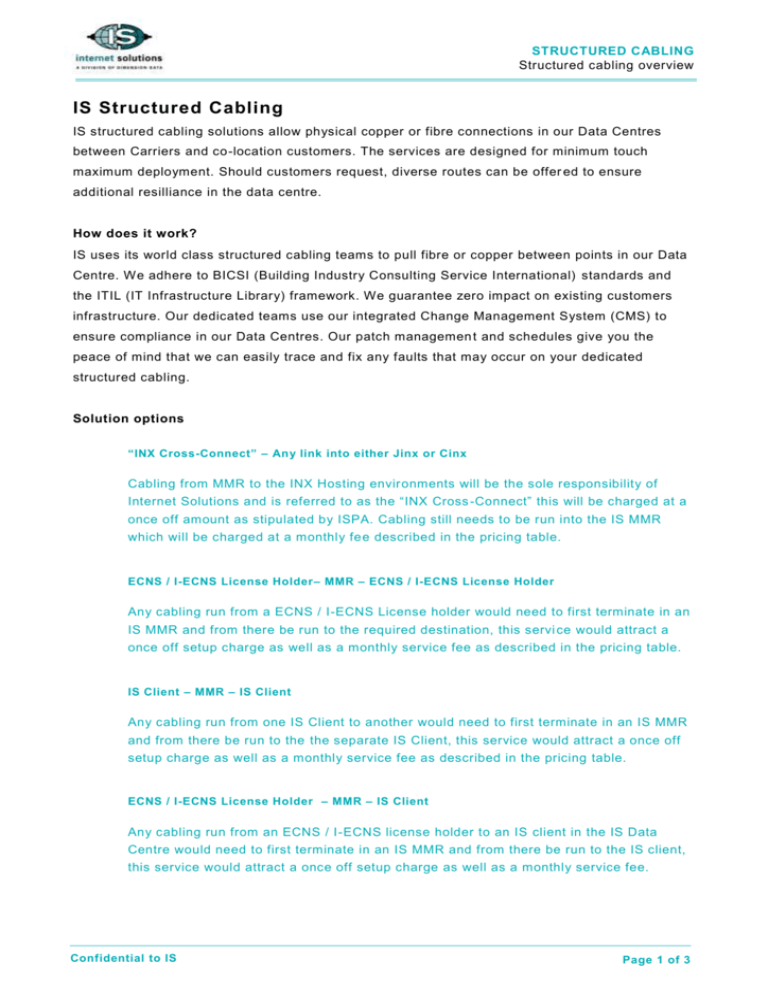
STRUCTURED CABLING Structured cabling overview IS Structured Cabling IS structured cabling solutions allow physical copper or fibre connections in our Data Centres between Carriers and co-location customers. The services are designed for minimum touch maximum deployment. Should customers request, diverse routes can be offer ed to ensure additional resilliance in the data centre. How does it work? IS uses its world class structured cabling teams to pull fibre or copper between points in our Data Centre. We adhere to BICSI (Building Industry Consulting Service International) standards and the ITIL (IT Infrastructure Library) framework. We guarantee zero impact on existing customers infrastructure. Our dedicated teams use our integrated Change Management System (CMS) to ensure compliance in our Data Centres. Our patch managemen t and schedules give you the peace of mind that we can easily trace and fix any faults that may occur on your dedicated structured cabling. Solution options “INX Cross-Connect” – Any link into either Jinx or Cinx Cabling from MMR to the INX Hosting envir onments will be the sole responsibility of Internet Solutions and is referred to as the “INX Cross -Connect” this will be charged at a once off amount as stipulated by ISPA. Cabling still needs to be run into the IS MMR which will be charged at a monthly fee described in the pricing table. ECNS / I-ECNS License Holder– MMR – ECNS / I-ECNS License Holder Any cabling run from a ECNS / I-ECNS License holder would need to first terminate in an IS MMR and from there be run to the required destination, this servi ce would attract a once off setup charge as well as a monthly service fee as described in the pricing table. IS Client – MMR – IS Client Any cabling run from one IS Client to another would need to first terminate in an IS MMR and from there be run to the the separate IS Client, this service would attract a once off setup charge as well as a monthly service fee as described in the pricing table. ECNS / I-ECNS License Holder – MMR – IS Client Any cabling run from an ECNS / I-ECNS license holder to an IS client in the IS Data Centre would need to first terminate in an IS MMR and from there be run to the IS client, this service would attract a once off setup charge as well as a monthly service fee. Confidential to IS Page 1 of 3 STRUCTURED CABLING Structured cabling overview Cabling Options Twisted Pair Cables Twisted pair data cables are designed to TIA/EIA 568 C.2 standards of performance for the horizontal segment of the network. Only Category 6 copper cables, which support gigabit Ethernet, are available for installation. In the real world, a cable with higher bandwidth will support it better. Network transmission depends on a signal with as little noise as possible; a noisy signal increases bit -error thus causing retransmission and slowing the throughput of the link. High bandwidth cables have less noise as expressed by the higher ACR value. W hen choosing a twisted pair cable, consider higher bandwidth cables for longer or higher speed links. Copper Patch panels Patch panels are strips of 24 or 48 outlet ports built to fit in a standard 48 cm (19 inch) rack. The ports may be subdivided into groups of 6. Fibre Optic Cable Distribution cables are a compact solution for transporting up to 144 tight buffered fibers (bundled in 2-48 fiber subunits) over a long distance. Aramid yarn provides tensile strength while a dielectric strength member gives support for pulling and for long riser installations. Distribution cables are more rugged than cordage due to the harsher installation environment. Because tight buffered fiber is easier to handle and requires less preparation than loose tube buffered fiber, distribution cables can be installed more quickly and economically. Distribution cables start as single unit cables in constructions of up to 24 fibers. Cables with more than 24 fibers are composed of multiple single cable subunits. The multiunit construction permits easy placement and tracing of single-mode and multimode fibers in the same cable (called a composite cable). These composite cables help a network prepare for future growth. Fiber Optic Connectors While many fiber optic connectors have been developed, three main types are presently in use - the SC and LC. These connectors are designed to fit onto 900 μm tight buffered fiber, loose tube cable with fan-out kits, or 1.6 or 2.9 mm cordage. Ceramic ferrules are customarily used to position the fiber. A fiber connectorized at one end is called a pigtail; if connectorized at both ends, it ’s called a patchcord. Pre-terminated patch cords and pigtails are readily available (Fibre pigtails are included) Confidential to IS Page 2 of 3 STRUCTURED CABLING Structured cabling overview LC connectors LC connectors are Small Form Factor (SFF) connectors about half the size of SC/ST connectors. They come in both simplex and duplex versions. They can be easily snapped in and out and offer excellent optical performance in a very small size. Most LC connectors have a ceramic ferrule. TIA/EIA 568 allows for the use of SFF connectors such as the LC. The LC connector is increasingly popular in enterprise networks and is often the connector used in network switches. SC connectors SC connectors are a push/pull design abo ut the same size as an ST. They are sturdy, easy to handle, pull-proof when used in cordage and can be yoked together into a convenient duplex assembly. The SC connector has a long heritage of successful deployments around the world. They offer excellent optical performance and are recommended by TIA/EIA 568 to illustrate fiber systems. Most SC connectors have a ceramic ferrule. Fiber enclosures Fiber enclosures may act as the intermediate cross/interconnect and may be wall or rack mounted (panel pre-installation is optional). Incoming fiber may be directly terminated with a connector or be spliced to pigtails within the enclosure and protected within an internal splice holder. Capacities vary depending on whether simplex or duplex connectors are b eing used and if connectorized fibers are being combined with spliced fibers. Confidential to IS Page 3 of 3



